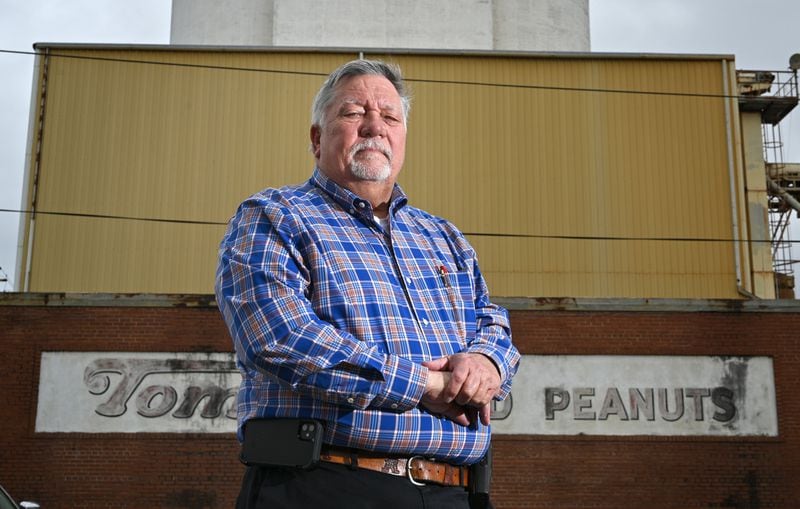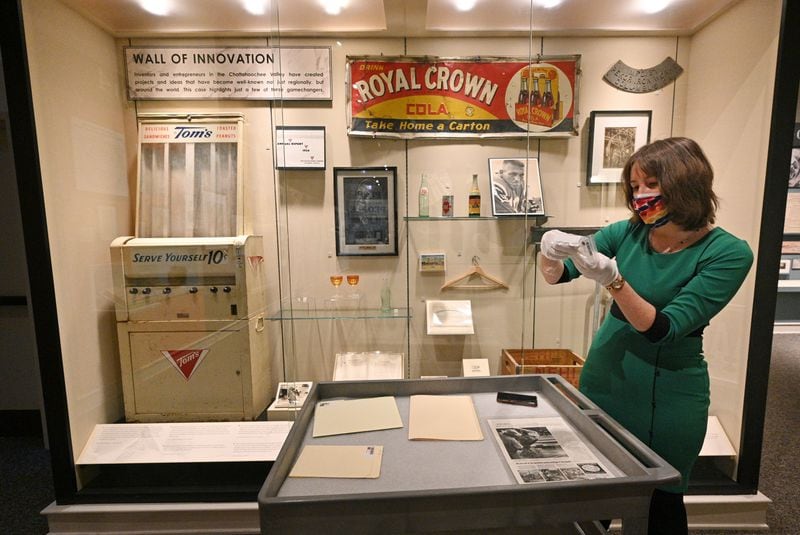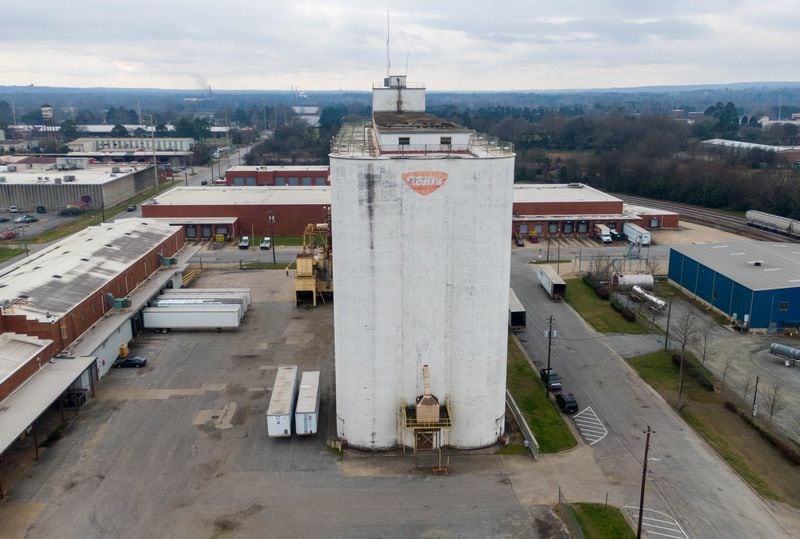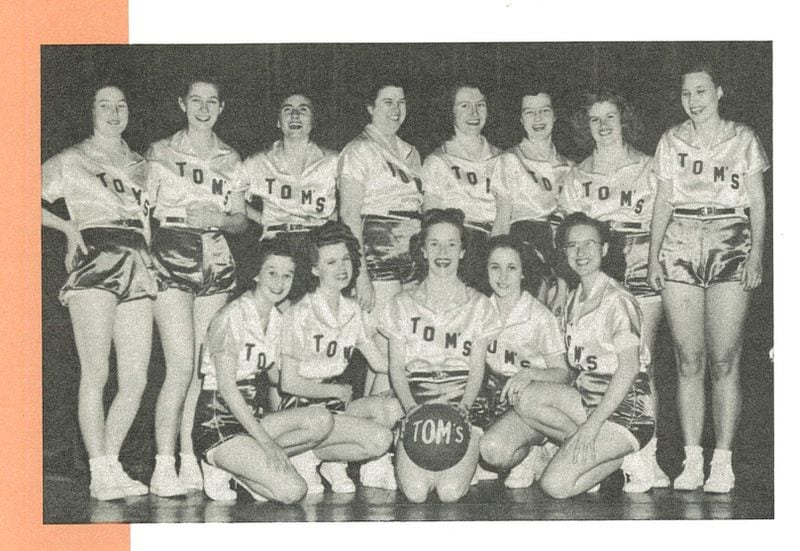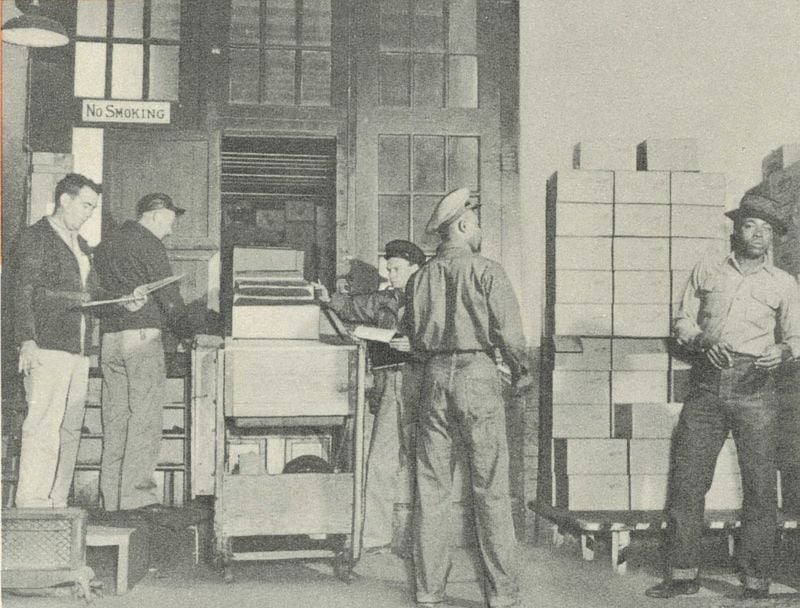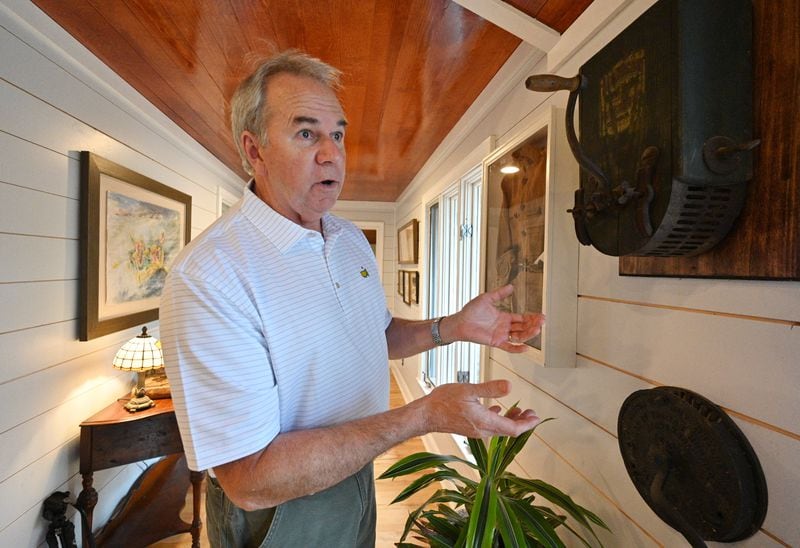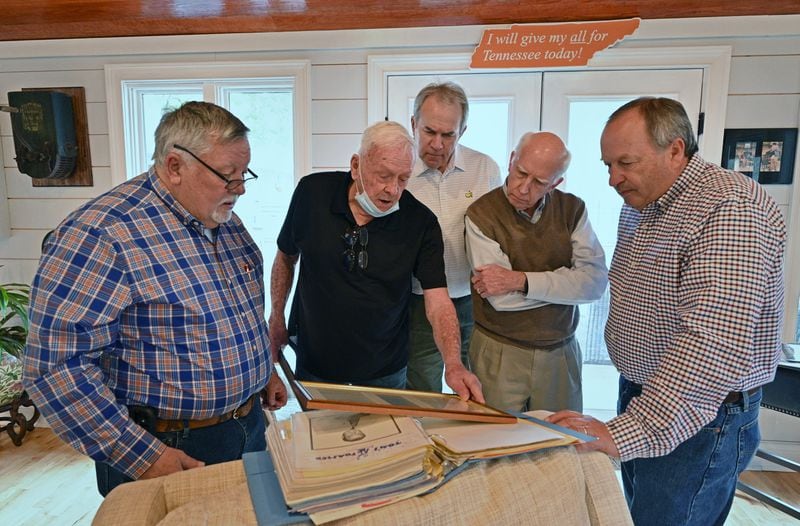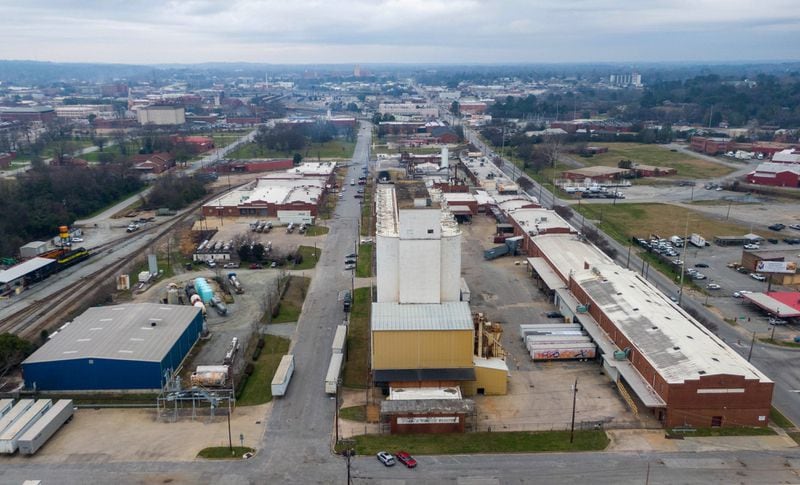In September of 1970, a 17-year-old high school senior named Johnny Johnson took a job in the candy department of Tom’s Foods, a snack food behemoth and one of the biggest employers in Columbus.
For each of the past 51 years, Johnson has clocked in and out of that same factory, helping churn out peanuts and crackers for hungry consumers across the nation. Sometime over the next year, he’ll leave the factory for the last time as a 68-year-old grandfather with a lifetime of stories to share.
While Johnson’s longevity at the same workplace is unusual in today’s world, he’s just one of thousands of Columbus residents who gave their best years to the former Tom Huston Peanut Company, a Southern business success and a staple employer in Georgia’s third-largest city.
Now, the last remnants of that legacy are coming to an end. Campbell Soup Co., the factory’s latest owner, announced in January that the plant would close by spring 2022, leaving its remaining 326 employees looking elsewhere for work and severing the last ties between Columbus and the Tom’s brand.
Credit: HYOSUB SHIN / AJC
Credit: HYOSUB SHIN / AJC
The first buildings at the factory date to 1927, and for most of its history, the factory served as both a corporate headquarters and primary manufacturing plant for Tom’s, which at times made more than 300 items but is most famous for its peanuts and potato chips. At the company’s apex, an army of independent distributors delivered Tom’s to over 300,000 stores in 47 states. And even after Tom’s faltered, filing for bankruptcy in 2005, the factory continued on under a series of outside owners.
“Tom’s was a family atmosphere. Everybody knew each other and they got along,” said Johnson, who stuck with the place through ups and downs, through bankruptcy and half a dozen ownership changes. “Your supervisor wasn’t just a boss, he was your friend. And that’s what I’ve been to all these guys I’ve worked with over the years: I’ve tried to be a friend to them as well.”
‘The Peanut King’
So many items purchased without a second thought today were once cutting-edge innovations, from hair spray to microwaves to wrist watches. Millions of consumers grab plastic packs of peanuts at convenience stores every day, unknowingly buying a product that launched its inventor to national fame and birthed a snacking empire.
Tom’s refers to John Thomas “Tom” Huston, a polymath who grew up on a Texas farm. Like many in the region, he often shelled peanuts and rarely enjoyed it. But Huston took action. In the 1910s, he invented a mechanical peanut sheller, then moved to southwest Georgia after securing a manufacturing contract with the Columbus Iron Works.
The sheller proved a boon to area peanut farmers, who gave Huston some of their crop in exchange. With thousands of legumes in hand, Huston set about figuring out what to do with them. In 1925, he came up with his own roasting process and, crucially, an airtight glassine package that kept the peanuts fresh for months. An upside-down triangle served as a logo, branded with the words “Tom’s Toasted Peanuts.” A modern version of that red Tom’s triangle can still be found on bags of chips across the Southeast.
Credit: Handout
Credit: Handout
Local trials proved that it was a smash hit, and within just a few years, Tom’s was sold across the country. In 1927, the first buildings went up at the Columbus headquarters, producing peanut butter, snack crackers, candy bars and other treats along with the signature toasted peanuts.
The Tom Huston Peanut Company quickly became an economic engine for Columbus. Even more importantly, it proved a boon for farmers in Georgia and Alabama, increasing demand for a crop that helped diversify the fields and ease a crippling overreliance on cotton.
It was this latter aspect that caught the attention of George Washington Carver, another prolific inventor stationed just 45 miles away at the Tuskegee Institute. The peanut migrated from Africa to the U.S. on slave ships in the 1800s, but was never particularly popular. Carver aimed to change that.
“We know that Carver’s driving impetus for creating all these new peanut products was that he was trying to help African American sharecroppers in Alabama get away from reliance on cotton, which drained the soil and was devastated by the boll weevil in the early 1920s,” said Rebecca Bush, exhibitions manager at the Columbus Museum. “Since Carver is trying to encourage farmers to focus more on the peanut, he has good reason to help find uses for that crop and to help drive demand for it. There’s a really natural partnership there.”
Credit: HYOSUB SHIN / AJC
Credit: HYOSUB SHIN / AJC
Carver and Huston became not just associates but close friends. They corresponded often, and in 1929, Huston offered Carver a job at Tom’s. When Carver said no, Huston presented a bust of his famous face to Tuskegee and gave him a diamond ring that, scientist that he was, Carver placed in his “geologic specimen case.”
Huston grew famous in his own right, featured twice in Time magazine as “The Farmer Boy Who Became Peanut King.” In 1929, he was also offered $4 million for the company (more than $60 million in today’s dollars), which he declined saying he wouldn’t know what to do with all of the money.
But while Tom’s had decades of growth ahead, it would not be at the hands of its founder. Huston continued inventing, and went bust betting his Tom’s stock on a frozen peach business that went belly up.
Instead, Vice President Walter Richards took over, saw Tom’s through the Great Depression and led its growth for another 20 years. Richards later became the first of two Tom’s presidents to serve as mayor of Columbus.
Credit: HYOSUB SHIN / AJC
Credit: HYOSUB SHIN / AJC
By midcentury, Tom’s products were offered across the country, though the majority of sales were always in the South. Its headquarters expanded to a sprawling 38-acre complex with over a thousand employees baking all kinds of delicacies, from divinity to coconut slices and peanut logs.
“Tom’s is one of the earliest and certainly I’d say the biggest non-textile manufacturing concern to emerge in the community,” said Bush. “It helped the business environment in Columbus branch out, creating another dimension of manufacturing in the city.”
Like many post-World War II companies, Tom’s aimed to be more than just an employer. There were company basketball, softball and bowling teams, a company magazine called the Toaster, and a company retreat with its own lake that employees and their families visited through the 1990s. The children of employees went to summer camps at the lake, and retired “Golden Goobers” led generations of school kids on field trips through the sweet-smelling factory.
Credit: Handout
Credit: Handout
Tom’s employed men and women, Black and white. However, period photos appear to show that work was strictly divided by both gender and race, with rows of white female cracker sorters and teams of Black male laborers.
Credit: Handout
Credit: Handout
Products were sold in large glass jars that today fetch a pretty penny on the antique circuit. Chips and peanuts were even peddled on the honor system at times before Tom’s pioneered the use of glass-front, mechanical vending machines that became a worldwide standard, further expanding its reach.
The company headquarters expanded upward with the 1957 addition of 14 peanut silos standing 14 stories tall, enough room to hold 28 million pounds of Georgia’s state crop. And in 1966, Minnesota-based General Mills purchased Tom’s in what was then its largest-ever acquisition.
A family affair
At its apex, the Tom’s Columbus headquarters spanned 45 buildings, and Tom’s owned factories in Macon, Tennessee, Virginia, Florida, Texas, Maine and Fresno, California. After the Fresno plant opened, the company’s signature trucks bore the slogan “Coast to Coast.” Tom’s was a national brand and a coveted place to work.
“If you could get a job at Tom’s, that was kind of a badge,” said former Tom’s general manager Jack Warden. “You stuck your chest out when you told people you worked there.”
Warden experienced it firsthand when he tried to buy a microwave on credit less than three months after joining the company. Fresh out of college, he spoke to a Sears representative on the phone to try and get approved. When he told her where he worked, she raised his credit limit on the spot and he got his microwave.
“It was a staple of Columbus,” he said. “If you told somebody you worked at Tom’s, they knew you had a good job and a good employer.”
Credit: HYOSUB SHIN / AJC
Credit: HYOSUB SHIN / AJC
Warden had applied at the Tom’s Knoxville plant in 1980, then took the first airplane ride of his life when the company suggested he work in Columbus instead. He spent 31 years there, leaving in 2011 as the plant’s general manager.
When news of the closing hit, it quickly circulated among current and former employees. Warden called several old friends to his house to trade war stories, none with less than three decades of experience. Ben Smith spent 50 years at the factory; Donnie Tillery stayed 44 years; Jernigan Gresham was there 34 years, the same number as his father; Johnny Johnson, whose father, brother and an aunt also worked there, is at 51 years and counting.
In interviews, nearly all of them came back to the same word to describe the atmosphere: family.
“We had some good folks down there, I mean some really good folks,” said Tillery, who retired in the early 2000s as peanut plant manager. “That’s really what I miss more than anything else, it’s the daily dealings with people.”
They remembered the camaraderie, the relationships and the joy of scooping candied peanuts or salted cashews straight from the oven. For many employees, the family was literal, with brothers and sisters, fathers and sons, aunts and uncles all working together. Hiring managers took care to put relatives in different departments, lest a family emergency cripple the peanut plant or the sandwich division.
Credit: HYOSUB SHIN / AJC
Credit: HYOSUB SHIN / AJC
Warden rose quickly after starting off as an engineer, and he outlasted Tom’s itself. In 1983, General Mills sold Tom’s to British firm Rowntree-Mackintosh, the maker of Rolo and Kit Kat candies. That fall, Tom’s held a homecoming celebration with speeches from economist Arthur Laffer and performances by Ray Charles and the Florida State University marching band.
But Tom’s soon fell into decline. Rowntree-Mackintosh sold it to a group of local investors just five years later, who in turn sold Tom’s to Heico Acquisitions, a company controlled by billionaire Michael Heisley. Heisley got his start turning around struggling manufacturing outfits, and later became notorious for buying the Vancouver Grizzlies NBA team and moving it to Memphis. Tom’s was supposed to be his next turnaround success story. Instead, the company failed to turn a profit in any of the next 12 years.
Consumer tastes were changing and competition was fierce, especially from dominant player Frito-Lay. A subsidiary of PepsiCo and owner of brands including Lay’s, Fritos, Doritos, Cheetos, Funyuns and Ruffles, Frito-Lay became so dominant by the 1990s that it was the subject of a federal antitrust probe.
Tom’s did well in vending machines and mom-and-pop convenience stores, but never gained a foothold in grocery stores. The company filed for bankruptcy in 2005 and was bought for just $37 million by Charlotte-based Lance Inc., which had a similar background to Tom’s, founded by an entrepreneur with a pile of peanuts.
Lance took on Tom’s as a kind of partner, even sponsoring a dual-branded Lance/Tom’s NASCAR team. The Columbus factory operated more or less as before, churning out the same peanuts only with Lance logos. But the wheels of business kept turning. Lance merged with pretzel maker Snyder’s of Hanover in 2010, and the combined company was in turn purchased by Campbell Soup Co. in 2018.
Interviewees for this article said they were sad but not surprised that Campbell closed the factory. The Tom’s brand will continue, according to a company spokesperson, but the last ties to its home city will be cut for good sometime in 2022. A trio of products, the Peanut Bar, Star Bites and Boston Old Style peanuts, are being cut as well.
A sign of changing times
The influence and prosperity of Tom’s continue in Columbus. Many of its old executives went on to influential roles in other industries, and the employees who put down roots in the city contribute to its growth today.
Business leaders said they had no prior notice of the closing, but are already looking at what’s next for the 28-acre site, be it a future roasting peanuts for another firm or perhaps a rebirth as a mixed-use development.
“That factory has really done a lot for the lives of the people of Columbus, providing gainful employment for so many people for so many years,” said Columbus Chamber of Commerce President Jerald Mitchell. “To the extent that we find a company that is considering Columbus and that footprint, whether the building, the land or the workforce, we’ll try to get them to locate there.”
Credit: HYOSUB SHIN / AJC
Credit: HYOSUB SHIN / AJC
Doing so might be a hard sell given the continued decline of manufacturing in America and broader shifts in the economy. Columbus is home to other food processing facilities, but the overarching trend in the U.S. has been away from manufacturing and toward service sector jobs.
“Manufacturing is going away,” said Emory University economics professor Thomas Smith. “We’re not seeing an increase in manufacturing workers, we’re seeing a decrease. There has been a steady decline for years and years.”
So while the site will enjoy a future in one form or another, its closing may prove to be just another step in the evolution of industries in Georgia, with assembly line gigs replaced by jobs in surging sectors like health care, information technology and even film production.
Like the cotton mills that once dominated Columbus, Tom’s Toasted Peanuts were only a single step removed from the fields of agriculture. The crop was converted directly into a product, and a year with too much or too little rain could spell trouble in the factories. The city’s dominant companies today, Synovus Financial Corp., Aflac and payments processor TSYS, all operate in decidedly postmodern industries that trend toward white-collar work.
In this way, Tom’s and its sprawling factory were a symbol of their time and a bridge to the modern economy, representing an era when people left fields for cities in search of stable employment and new opportunities. That promise continues today through the descendants of those employees, and Tom Huston’s impact is still felt every time someone rips open a bag of salted peanuts from the local convenience store.
“Tom’s was really the foray into food processing for Columbus, and it became a real staple in the community,” said Mitchell. “Other than the presence of textile mills and other mill-type industries, this particular employer was something that was different.”
About the Author
